Extended Position
In the previous exercises and examples, the interval between adjacent fingers of the left hand was no greater than a half-step. Therefore, the interval reached between the first and fourth fingers was a minor third. Our hand is constructed so that as a rule (with few exceptions) we do not stretch more than a half-step between the second and third fingers or between the third and fourth fingers. However, we can stretch a major third between the first and fourth fingers using extended position. The hand position we have practiced up until now is called closed hand position, but by moving the first finger back by a half-step–with the thumb and the other fingers staying precisely in their previous places–the hand can stretch into an extended position.



Exercises for Extended Position
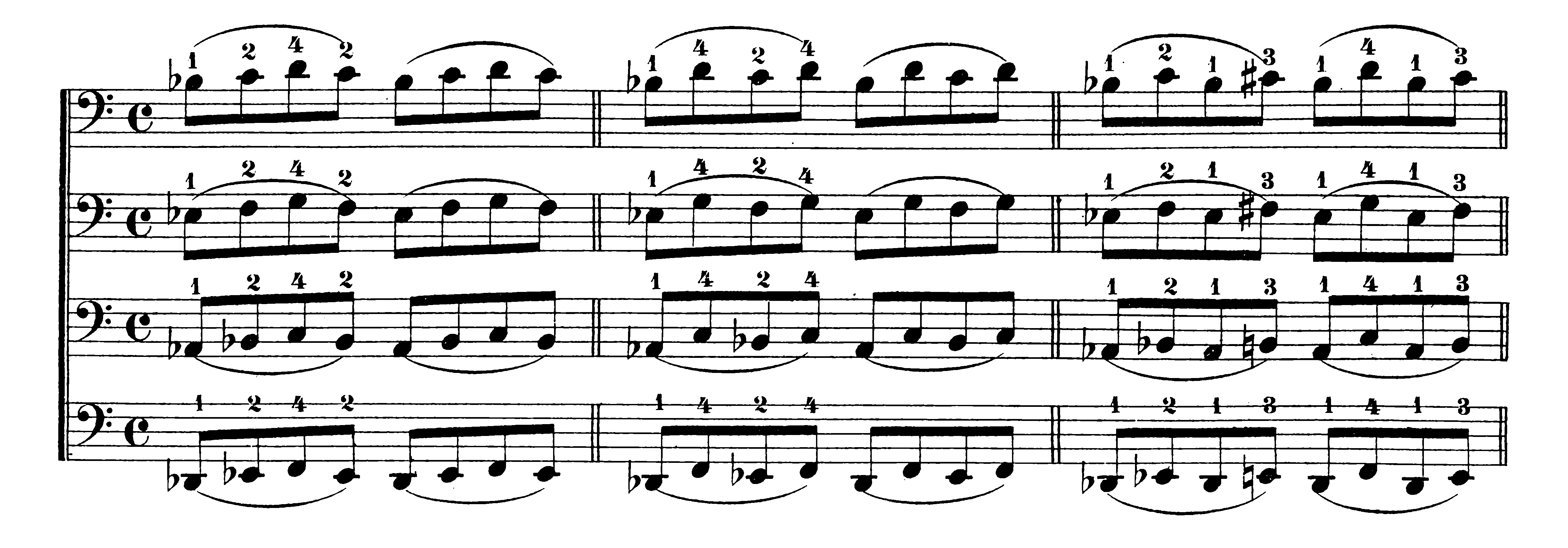
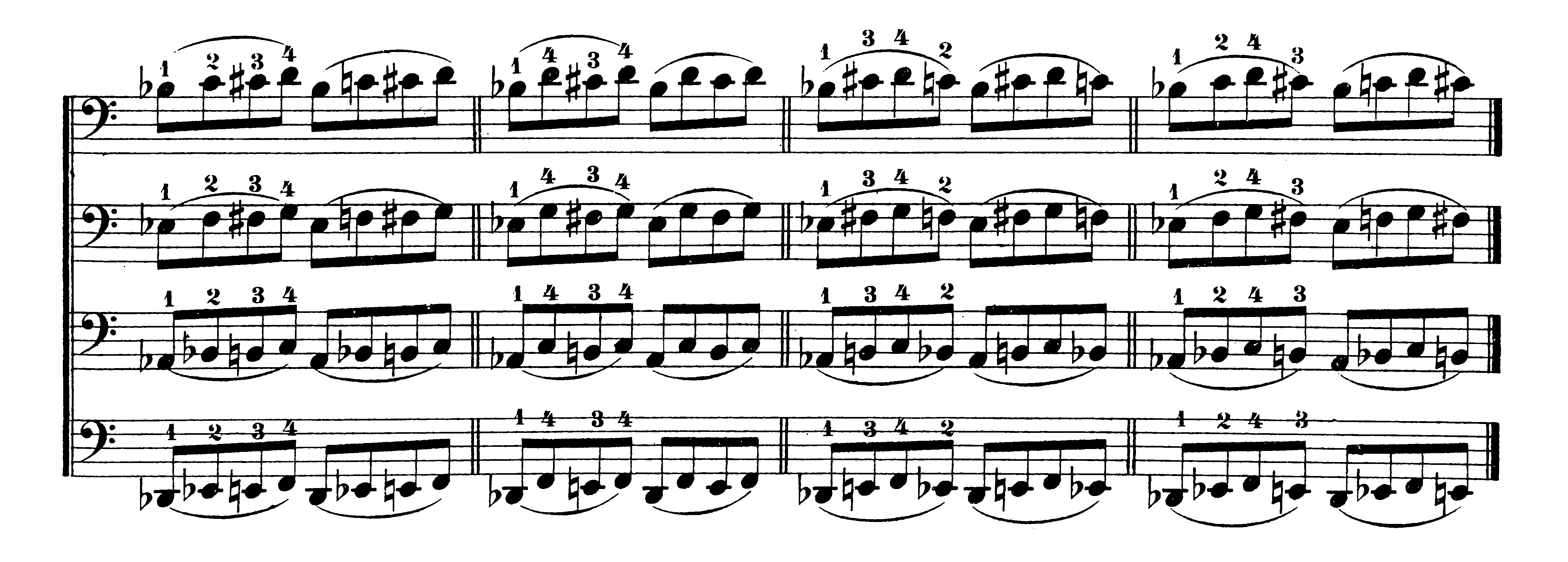
Examples for Extended Position
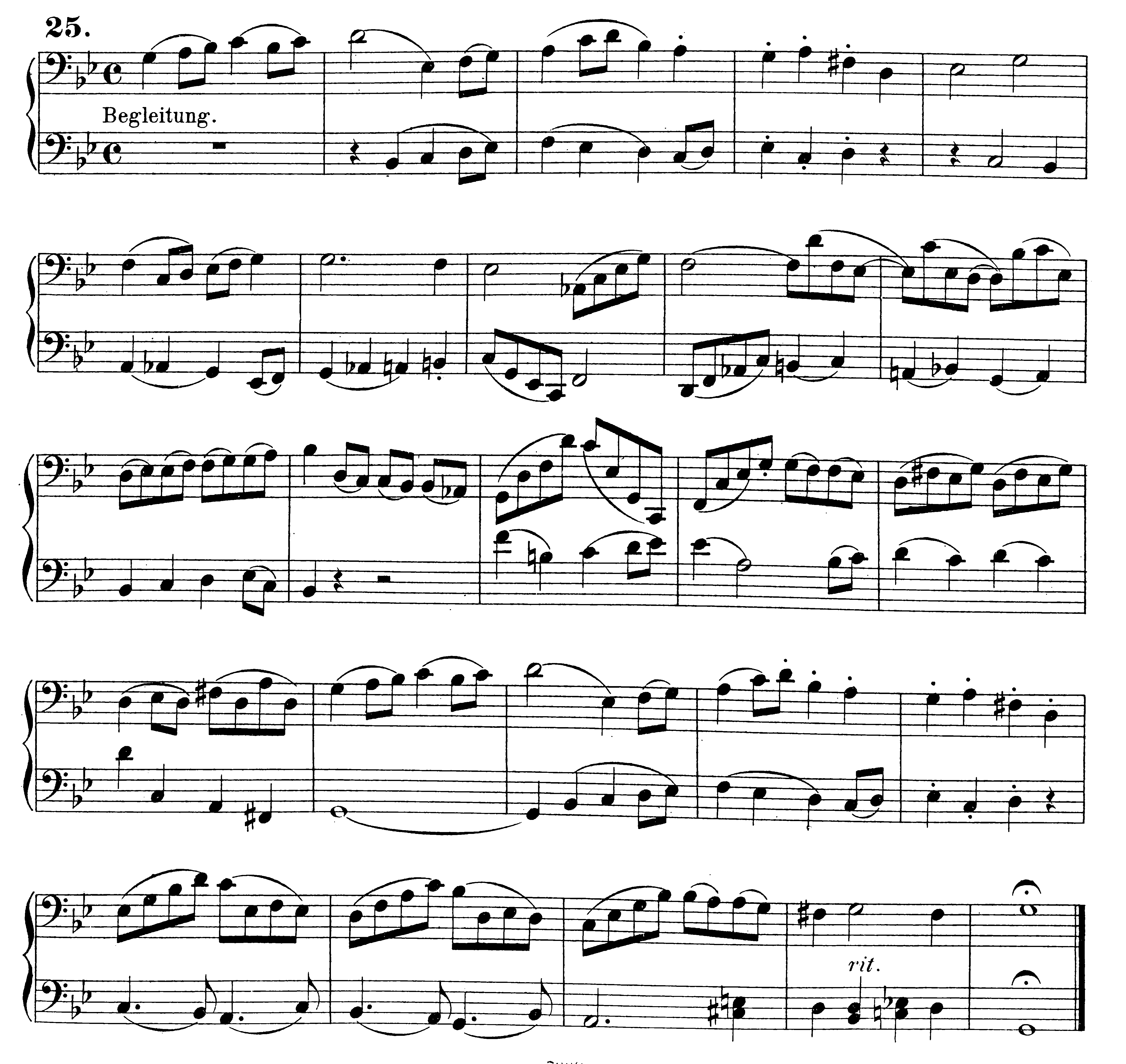
Exercises Alternating Between Closed and Extended Position
The player must ensure that when moving the first finger up and down, the thumb and hand do not alter their position.
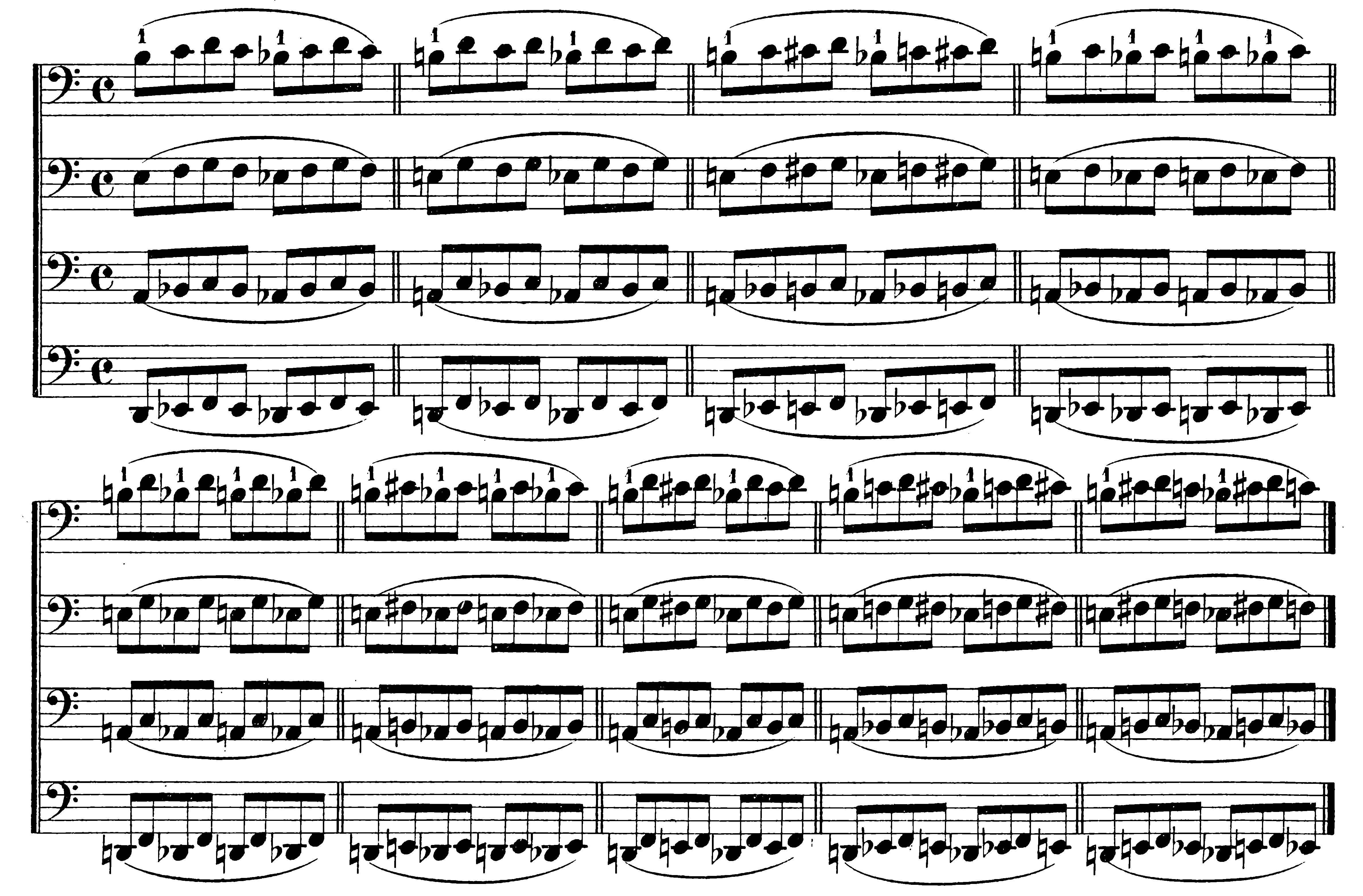
It is best not to change the position of the fingers, and to let them stay on the string. For example, in nos. 1, 2, and 8, the second finger stays on the string. In nos, 3, 4, and 7, the third finger stays on the string. In nos. 5 and 6, the fourth finger stays on the string.
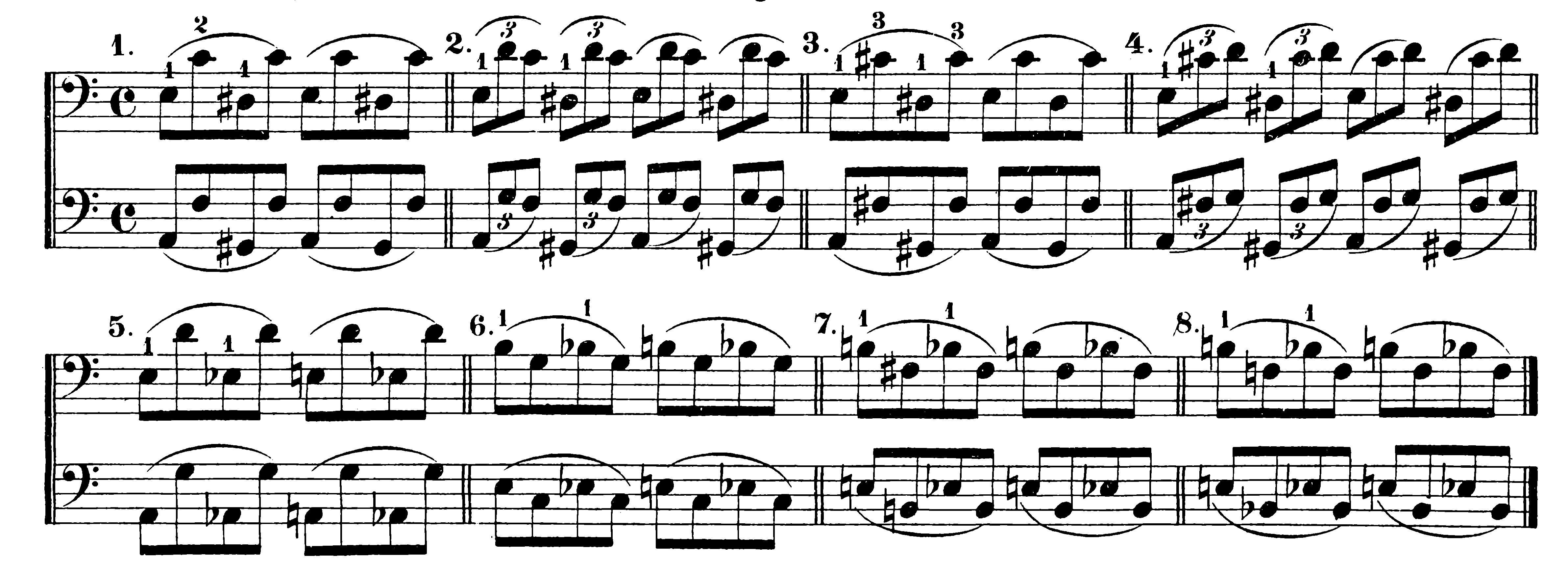
Extended position allows us to play the notes D-flat, A-flat, and B-flat in first position, which enables the execution of some scales with double flat.





Examples with alternating close and extended hand position
